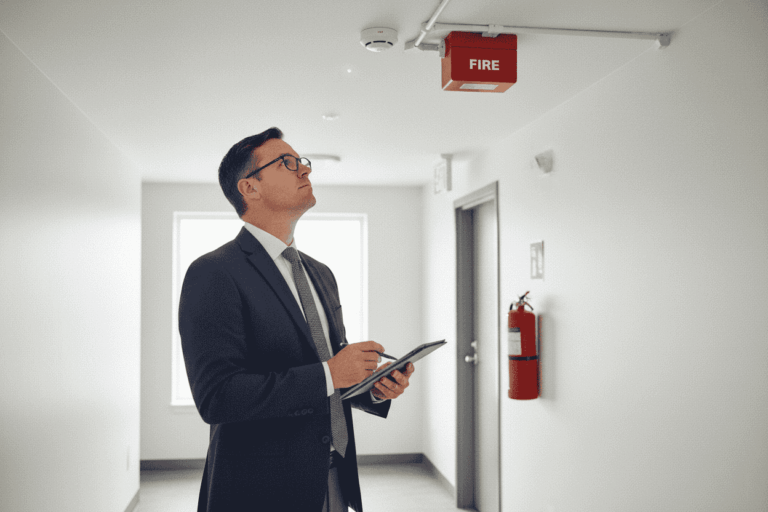A reliable alarm system is essential for safeguarding your property, family, and peace of mind. But like any other piece of technology, alarm systems require regular maintenance and occasional troubleshooting to function properly. Over time, even the best setups may encounter issues that affect performance, trigger false alarms, or leave you vulnerable.
In this guide, we’ll walk you through everything you need to know about alarm system maintenance, how to spot common alarm system issues, and practical tips for troubleshooting and fixing alarm system problems—with a handy alarm system maintenance checklist you can follow.
Table of Contents
ToggleWhy Alarm System Maintenance Matters
Think of your alarm system like a car. You wouldn’t skip oil changes or tire checks, right? Similarly, without routine care, your system can become prone to failures, slow responses, and frustrating false alarms.
Proper maintenance:
- Increases lifespan of devices
- Reduces risk of false alarms
- Improves response time
- Ensures 24/7 protection
- Helps you stay compliant with insurance or local regulations
Not sure if your system needs an upgrade? Take a look at the best security alarm features that modern systems now offer.
Most Common Alarm System Issues You Might Face
Even with solid installation, problems can still arise. Here are some common alarm system issues that users frequently experience:
1. False Alarms
These are triggered by pets, faulty sensors, low batteries, or user error. They’re not only annoying but may result in fines or emergency dispatch fees.
2. Sensor Malfunctions
Motion sensors, door contacts, or glass break detectors can go offline or become unresponsive.
3. Communication Errors
Systems connected to monitoring centers might lose signal due to internet or cellular disruptions.
4. Power Failures
Backup batteries can wear out over time, making the system vulnerable during outages.
5. Trouble Codes
Most alarm systems display error or “trouble” codes on the control panel—indicating a specific issue needing attention.
For an in-depth guide on resolving these, don’t miss this post on troubleshooting common security alarm system issues.
Troubleshooting Alarm System Problems: What You Can Do
Before you call in the pros, there are several DIY steps you can take to fix alarm system problems:
1. Restart Your Control Panel
Sometimes a simple reboot can clear glitches and reconnect sensors.
2. Replace Batteries
Low battery warnings are common. Check batteries in all sensors, detectors, and the control panel.
3. Inspect Sensor Placement
Make sure sensors haven’t shifted, been obstructed, or damaged.
4. Check Wi-Fi or Cellular Signal
Weak connectivity is a leading cause of notification delays or failures.
5. Clear Trouble Codes
Refer to your manual or manufacturer’s website to decode and reset any warning indicators.
If your system includes fire protection, also check out this detailed overview of your fire alarm control panel to make sure everything’s running smoothly.
Alarm System Maintenance Checklist
To keep your system working like a charm, use this alarm system maintenance checklist every 3–6 months:
✅ Test All Sensors – Walk around and trigger motion detectors, window sensors, and door contacts.
✅ Inspect Cameras – Clean lenses and confirm video feeds are clear and recording properly.
✅ Replace Batteries – Change all sensor and panel batteries at least once a year.
✅ Check for Loose Wiring – Especially if your system is hardwired.
✅ Review App Settings – Ensure alerts and contacts are up to date.
✅ Check Internet & Cellular Connectivity – Strong signal = faster alerts.
✅ Update Firmware/Software – If your system has a mobile app or smart features.
✅ Inspect Smoke and CO Detectors – These should be cleaned and tested regularly, especially smart ones. Learn more about fire safety and smart smoke detectors.
✅ Clear Trouble Codes – Don’t ignore blinking lights or error messages on the panel.
Regular checkups take just a few minutes but can save you thousands in damages or false alarms.
When to Call a Professional
While many minor issues are DIY-friendly, it’s wise to contact a licensed technician if:
- Trouble codes won’t clear after a reset
- Sensors continuously fail to detect motion or entry
- You’re upgrading or adding new components
- Your system hasn’t been serviced in over a year
Professional inspections often include comprehensive testing, firmware updates, and security assessments that go beyond what a homeowner can do.
If you’re setting up a new system from scratch, don’t miss this easy-to-follow step-by-step guide to home alarm system setup.
Smart Features That Help You Maintain Your System
Modern alarm systems now include features that make maintenance and troubleshooting easier than ever:
- Mobile App Diagnostics: Get real-time updates on sensor health.
- Automatic Battery Alerts: Notifications when it’s time to replace.
- Cloud Storage Access: Helps track patterns or recurring issues.
- Remote Reboot Options: Power-cycle your system without touching the panel.
If you’re still using an older system and wondering if it’s time for a change, this blog post on whether home security systems are worth it can help you decide.
Tips for Long-Term Alarm System Care
Want to avoid major alarm headaches down the road? Follow these tips:
- Keep Your Manual Handy: It’s still your best troubleshooting resource.
- Secure Equipment: Keep sensors out of reach from pets or kids.
- Review Alerts Regularly: Don’t ignore push notifications or emails from your system.
- Schedule Annual Inspections: Even a quick check by a pro can uncover hidden issues.
- Stay Informed: Security tech evolves fast. Read blogs, attend webinars, or follow your provider’s updates.
Conclusion
Maintaining your alarm system doesn’t have to be complicated. With regular inspections, a handy alarm system maintenance checklist, and a little know-how, you can avoid costly repairs, false alarms, and downtime. When problems do arise, knowing how to troubleshoot your alarm system empowers you to act quickly and confidently. Need expert help or want to upgrade your existing setup? Go Safer Security offers reliable support, smart system upgrades, and professional alarm services you can trust.







